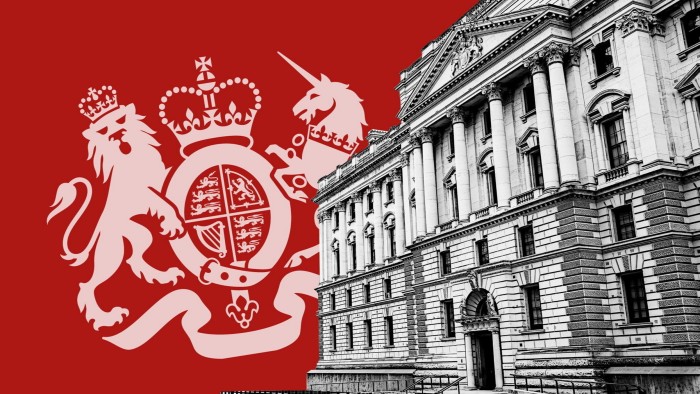Unlock the Editor’s Digest for free
Roula Khalaf, Editor of the FT, selects her favourite stories in this weekly newsletter.
UK 10-year borrowing costs on Wednesday rose to the highest level since the global financial crisis as a bond sell-off intensified, threatening the Labour government’s ability to meet its self-imposed budget rules.
The 10-year gilt yield climbed as much as 0.09 percentage points to 4.78 per cent in late-morning trade, its highest level since October 2008, according to Bloomberg data. Yields move inversely to prices.
The yield on the 30-year gilt — which on Tuesday rose to its highest level since 1998 — also continued to climb, touching 5.33 per cent.
Sterling, meanwhile, fell 0.9 per cent against the dollar to $1.236.
Chancellor Rachel Reeves left herself a slender £9.9bn of headroom against her revised fiscal rules in her October Budget even after announcing a £40bn tax-raising package that aimed to “wipe the slate clean” on the public finances.
Since then, increases in government debt yields have put that budgetary wiggle-room under threat. Movements up to Tuesday left the headroom against the Treasury’s current budget rule — its key benchmark — at just £1.1bn according to calculations from Capital Economics.
Further increases in yields could — if sustained — force the chancellor to announce corrective action to keep budget policy on track. On March 26 the Office for Budget Responsibility announces a new set of fiscal forecasts that will factor in bond yield movements.
“If bond yields rise further, Reeves may be forced to make the economically damaging decision of further increasing taxes or cutting back on planned public spending to balance the books,” said Kallum Pickering, chief economist at Peel Hunt.
The chancellor has committed to announce only one major fiscal event — including tax and borrowing plans — a year. The next of these is not expected until the autumn.



